- Home
- Gore Vidal
The Second American Revolution and Other Essays 1976--1982 Page 4
The Second American Revolution and Other Essays 1976--1982 Read online
Page 4
Of what, then, was Edmund Wilson a master? That is a question in need of an answer, or answers; and there are clues in the book at hand, The Thirties: From Notebooks and Diaries of the Period. At the time of Wilson’s death, eight years ago, he was editing the notebooks that dealt with the Twenties. He had already finished Upstate, a chronicle of his works and days from the early Fifties to 1970. Upstate is a highly satisfactory Wilsonian book, filled with sharp personal details, long scholarly asides on those things or people or notions (like New York religions) that had caught his fancy. Although he had planned to rework his earlier records, he soon realized that he might not live long enough to complete them. He then designated, in his will, that Professor Leon Edel edit the remains, with the injunction that the text be published the way he wrote it, except for straightening out “misspellings and faulty punctuations” (but not, apparently, faulty grammar: Wilson often “feels badly”—it is liver). With The Thirties, Professor Edel had his work cut out for him because, he writes, “It is clear from the condition of the typescript that [Wilson] intended to do much more work on this book.” That is understatement.
At the beginning of the Thirties, Wilson completed Axel’s Castle; at the end, he had finished To the Finland Station. He wrote for The New Republic, supported, briefly, the American Communist party, visited the Soviet Union, Detroit, Appalachia, Scotsboro, and tried a season of teaching at the University of Chicago. The decade, in a sense, was the making of him as critic and triple thinker. Emotionally, it was shattering: in 1930 he married Margaret Canby; in 1932 she died. He also conducted a wide range of affairs, many on the raunchy side.
Professor Edel rather flinches at Wilson’s “record of his own copulations” in general and the notes about his marriage in particular (so unlike the home life of our own dear Master): “some readers may be startled by this intimate candid record of a marriage.” But Professor Edel is quick to remind us that this is all part of “the notebooks of a chronicler, a way of tidying the mind for his craft of criticism….He tries, rather, to be a camera, for this is what he finds most comfortable.” Well, yes and no.
In 1930 Edmund Wilson was thirty-five. He was a member of the minor Eastern gentry, a Princeton graduate, a World War I overseas noncombatant. In the Twenties, he had lived the life of the roaring boy but unlike the other lads that light-footed it over the greensward, he never stopped reading and writing and thinking. Thanks, in large part, to the Christers who had managed to prohibit the legal sale of spirits, alcohol was as much a curse to that generation as Gin Lane had been to the poor of eighteenth-century London. I suspect that a great deal of the grimness of this volume is a result of hangover and its concomitant despairs. At the same time, it is the record of an astonishing constitution: Wilson would write while he was drinking—something I should not have thought possible for anyone, even his doomed friend Scott Fitzgerald.
From thirty-five to forty-five men go from relative youth to middle age. The transit is often rocky. As a man’s life settles into a rut, in mindless rut the man is apt to go. Certainly, this was true of Wilson, as readers of Memoirs of Hecate County might have suspected and as readers of The Thirties will now know for certain. During the so-called “ignoble” decade, despite constant drinking, Wilson was sexually very active. He enjoyed trade in the form of the Slavic Anna, a working-class woman whose proletarian ways fascinated him. He had sex with a number of those women who used to hang about writers, as well as with ladies at the edge of the great world. He bedded no Oriane but he knew at least one Guermantes before her translation to the aristocracy.
Although Wilson’s bedmates are sometimes masked by initials, he enjoys writing detailed descriptions of what Professor Edel calls his “copulations.” These descriptions are mechanistic, to say the least. Since they are not connected with character, they are about as erotic as a Popular Mechanics blueprint of the sort that is said to appeal to the growing boy. I am not sure just why Wilson felt that he should write so much about cock and cunt except that in those days it was a very daring thing to do, as Henry Miller had discovered when his books were burned and as Wilson was to discover when his own novel, Memoirs of Hecate County, was banned.
In literature, sexual revelation is a matter of tact and occasion. Whether or not such candor is of interest to a reader depends a good deal on the revealer’s attitude. James Boswell is enchanting to read on sex because he is by self, as well as by sex, enchanted and possessed. The author of My Secret Life (if for real) is engaging because he is only interested in getting laid as often as possible in as many different ways and combinations. We also don’t know what he looks like—an important aid to masturbation. Frank Harris (not for real) has the exuberance of a natural liar and so moves the reader toward fiction.
The list now starts to get short. The recently published (in English) letters of Flaubert are interesting because he has interesting things to say about what he sees and does in the brothels and baths of North Africa. Also, tactfully, mercifully, he never tells us what he feels or Feels. The sex that Flaubert has with women and men, with boys and girls, is fascinating to read about (even though we know exactly how he looks). This is due, partly, to the fact that his experiences are, literally, exotic as well as erotic and, partly, to that famous tone of voice. Today one is never quite certain why memoirists are so eager to tell us what they do in bed. Unless the autobiographer has a case to be argued, I suspect that future readers will skip those sexual details that our writers have so generously shared with us in order to get to the gossip and the jokes.
In Wilson’s notebooks, he liked to describe sex in the same way that he liked “doing” landscapes. “It is certainly very hard,” he concedes, “to write about sex in English without making it unattractive. Come is a horrible word to apply to something ecstatic.” Finally, he did neither sex scenes nor landscapes very well. But in sexual matters, he has no real case to make, unlike, let us say, the committed homosexualist who thinks, incorrectly, that candor will so rend the veil that light will be shed upon what the society considers an abominable act and in a blaze of clarity and charity all will be forgiven. This is naïve, as Wilson himself demonstrates in these pages. He was very much an American of his time and class and the notebooks are filled with innumerable references to “fairies” that range from derisive to nervous; yet Wilson also admits to occasional homosexual reveries which he thought “were a way of living in the grip of the vise, getting away into a different world where those values that pressed me did not function.”
Nevertheless, it is disquieting to find Wilson, in the Thirties (having admired Proust and Gide), quite unable to accept the fact that a fairy could be a major artist. In Axel’s Castle, he has great trouble admitting, or not admitting, the sexual source of Proust’s jealousy.
On the other hand, he made a curious and admirable exception in the case of Thornton Wilder.
During the Twenties and Thirties, Wilder was one of the most celebrated and successful American novelists. He was also one of the few first-rate writers the United States has produced. Fortunately for Wilder’s early reputation, he was able to keep his private life relatively secret. As a result, he was very much a hero in book-chat land. In The Twenties Wilson describes a meeting with Wilder. He was startled to find Wilder “a person of such positive and even peppery opinions.” Wilson had not read any of Wilder’s novels because he thought that “they must be rather on the fragile and precious side” (what else can a fairy write?). As it turned out, each had been reading the new installment of Proust’s novel and Wilson was delighted to find that Wilder thought Saint Loup’s homosexuality unjustified. Over the years, Wilson was to review Wilder seriously and well. When Wilder was the victim of a celebrated Marxist attack, Wilson came to Wilder’s defense—not to mention literature’s. But the word was out and Thornton Wilder’s reputation never recovered; to this day, he is a literary nonperson. Nevertheless, it is to Wilson’s credit that he was able to overcome his horro
r of fairydom in order to do justice to a remarkable contemporary.
Of a certain Victorian Englishman it was said that no lady’s shoe, unescorted, was safe in his company. It could be said of Edmund Wilson that, like Cecil B. De Mille, “he never met a woman’s foot he didn’t like.” Is there any reader of Wilson’s novel I Thought of Daisy who does not recall Wilson’s description of a girl’s feet as being like “moist cream cheeses”? But Wilson’s podophilia did not stop there: he could have made a fortune in women’s footwear. From The Thirties: “…shoes, blue with silver straps, that arched her insteps very high…,” “Katy’s little green socks and untied gray moccasins…“young Scotch girl M.P. [with] large feet bulging out of black shoes…,” “…silver open-work shoes that disclosed her reddened toenails, such a combination as only she could wear….” In The Thirties, I counted twenty-four references to shoes and feet; each, let me quickly say, belonging to a woman. When it came to shoes, Wilson was sternly heterosexual—not for him the stud’s boot or the little lad’s Ked. But, to be absolutely precise, there is one very odd reference. Wilson is struck by the number of Chicago men who wear spats. Reverie: “Excuse me, sir. But a hook is loose on your left spat. As chance would have it, I have with me a spats-hook. If you’ll allow me, sir….” Whenever Wilson strikes the Florsheim note, he is in rut.
As a lover, Wilson is proud of his “large pink prong.” (Surely, Anaïs Nin said it was “short and puce”—or was that Henry Miller’s thumb?) In action, “My penis went in and out so beautifully sensitively, caressing (me) each time so sweet-smoothly (silkily)….” Yet he refers, clinically, to his “all too fat and debauched face” not to mention belly. He was a stubby little man who drank a lot. But his sexual energy matched his intellectual energy; so much for Freud’s theory of sublimation.
The section called “The Death of Margaret” is fascinating, and quite unlike anything else he was ever to write. He started scribbling in a notebook aboard an airliner in 1932, en route to California where his wife of two years had just died of a fall. A compulsive writer, Wilson felt, instinctively, that by a close running description of what he saw from the plane window and in the air terminals he could get control of the fact of death and loss, or at least neutralize the shock in the act of recreation. He writes a good many impressionistic pages of the trip before he gets to Margaret. Some very odd items: “—touching fellow passenger’s thigh, moving over to keep away from it, did he move, too?—shutting eyes and homosexual fantasies, losing in vivid reality from Provincetown, gray, abstract, unreal sexual stimulus—also thought about coming back with Jean Gorman on train as situation that promises possibilities; but couldn’t stomach it—young man too big, not my type—” Then impressions of his time together with Margaret: “I felt for the first time how she’d given me all my self-confidence, the courage that I hadn’t had before to say what I thought….”
In Santa Barbara, he stays with her family. “At Mrs. Waterman’s house [Margaret’s mother], when I began to cry, she said, I’ve never broken down….” “Second night: homosexual wet dream, figures still rather dim, a boy. Third night: nightmare—the trolls were in the dark part of the cellar….” Finally, the inevitable epitaph; “After she was dead, I loved her.” That is the story of every life—and death. For the next decade, Wilson dreams of Margaret and writes down the dreams. In these dreams he usually knows that she is dead but, somehow, they can overcome this obstacle. They don’t; even in dreams. Eurydice always stays put: It is the blight man was born for.
During the Thirties, Wilson’s interests were more political than literary. The Depression, the New Deal, the Soviet experiment absorbed him. Wilson is at his most attractive and, I should think, characteristic when he describes going to Russia. He wanted to think well of communism, and, to a point, he was enthralled by the “classless” society and by the way that one man, Lenin, “has stamped his thought and his language on a whole people.” This is not the treason but the very nature of the true clerk: the word as absolute can be motor to behavior and to governance. Gradually, Wilson is disillusioned about Stalin and the state he was making.
But what is fascinating to read today is not Wilson’s account of what he saw and did but the way that he goes about taking on a subject, a language, a world. This is what sets him apart from all other American critics. He has to get to the root of things. He will learn Hebrew to unravel the Dead Sea scrolls. Read a thousand windy texts to figure out the Civil War. Learn Russian to get past the barrier of Constance Garnett’s prose. He was the perfect autodidact. He wanted to know it all. Or, as he wrote, after he had a nervous breakdown in the Thirties, “I usually know exactly what I want to do, and it has only been when I could not make up my mind that I have really gone to pieces.”
Early in The Thirties, Wilson is a fellow traveler of the American communists’ faute de mieux. He can see no other way out of the Depression than an overthrow of the form of capitalism that had caused it. Before the election of 1932, he wrote: “Hoover stands frankly for the interests of the class who live on profits as against the wage-earning classes. Franklin Roosevelt, though he speaks as a Democrat in the name of the small businessmen and farmers and is likely to be elected by them in the expectation that he can do something for them, can hardly be imagined effecting any very drastic changes in the system which has allowed him to get into office. Whatever amiable gestures he may make, he will be largely controlled by the profit-squeezing class just as Hoover is.” This is prescient. Apropos the fireside chats: “Roosevelt’s unsatisfactory way of emphasizing his sentences, fairyish, or as if there weren’t real conviction behind him—in spite of his clearness and neatness—but regular radio announcers, I noticed later, did the same thing. (The remoteness of the speaker from his audience.)” It is a pity that Wilson, who was on the fringes of the New Deal, never got to know the president. “Roosevelt is reported to have answered when someone had said to him that he would either be the best president the country had ever had or the most hated: No—that he would either be the most popular or the last.”
Wilson often traveled to Washington in the Thirties and he had a sense of the place (derived from Henry Adams?) that makes him sound like one of us cliff-dwellers: “Washington is really a hollow shell which holds the liberalism of the New Deal as easily as the crooks and thugs of the Harding Administration—no trouble to clean it out every night and put something else in the past Administration’s place.”
Wilson goes to see one Martha Blair—“a rather appealing mouth and slim arms, though pale thyroid eyes: pink flowered print dress, with sleeves that gave a glimpse of her upper arms…she complained of the small town character of Washington—if you said you had another engagement, people asked you what it was—when she had said she was going to Virginia for the weekend they had asked her where in Virginia.” It is odd to see this old formidable “socialite” of my childhood (she was then in her early thirties) as viewed from a totally different angle. Martha Blair kept company in those days with Arthur Krock of The New York Times. They were known as Martha’n’Artha. Wilson thinks they were married in 1934. I don’t. At about that time, I remember there was a great row between my mother and her husband over whether or not the unmarried couple Martha and Arthur could stay overnight at our house in Virginia—where she was so often headed. My mother won that round. They were often at Merrywood, and Arthur Krock was the first Jew that I ever met. Anti-Semitism was in full boisterous American flower in the Thirties, and Wilson’s record of conversations and attitudes haunt a survivor in much the same way that the background of a Thirties movie will reverse time, making it possible to see again a People’s Drug store (golden lettering), straw hats, squared-off cars, and the actual light that encompassed one as a child, the very same light that all those who are now dead saw then.
Wilson notes, rather perfunctorily, friends and contemporaries. Scott Fitzgerald makes his usual appearances, and in his usual state. Once again we get the Hemingway-Wilson-Fi
tzgerald evening. “When Scott was lying in the corner on the floor, Hemingway said, Scott thinks that his penis is too small. (John Bishop had told me this and said that Scott was in the habit of making this assertion to anybody he met—to the lady who sat next to him at dinner and who might be meeting him for the first time.) I explained to him, Hemingway continued, that it only seemed to him small because he looked at it from above. You have to look at it in the mirror. (I did not understand this.)” I have never understood what Hemingway meant either. For one thing, Fitzgerald had obviously studied his diminutive part in a mirror. Even so, he would still be looking down at it unless, like a boy that I went to school with, he could so bend himself as to have an eye to eye, as it were, exchange with the Great American (Male) Obsession.
“Scott Fitzgerald at this time [1934] had the habit of insulting people, and then saying, if the victim came back at him: ‘Can’t take it, huh?’ (I learned years later from Morley Callaghan that this was a habit of Hemingway’s, from whom Scott had undoubtedly acquired it.)” There is altogether too little about Wilson’s friend Dawn Powell, one of the wittiest of our novelists, and the most resolutely overlooked. But then American society, literary or lay, tends to be humorless. What other culture could have produced someone like Hemingway and not seen the joke?
Wilson’s glimpses of people are always to the point. But they are brief. He is far more interested in writing descriptions of landscapes. I cannot think where the terrible habit began. Since Fitzgerald did the same thing in his notebooks, I suppose someone at Princeton (Professor Gauss? Project for a scholar-squirrel) must have told them that a writer must constantly describe things as a form of finger-exercise. The result is not unlike those watercolors Victorian girls were encouraged to turn out. Just as Wilson is about to tell us something quite interesting about e. e. cummings, he feels that he must devote a page or two to the deeply boring waterfront at Provincetown. A backdrop with no action in front of it is to no point at all.

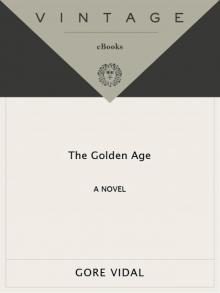 The Golden Age: A Novel
The Golden Age: A Novel Death Before Bedtime
Death Before Bedtime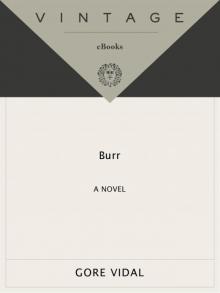 Burr
Burr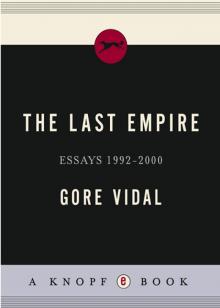 The Last Empire
The Last Empire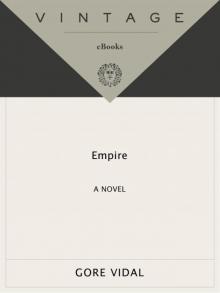 Empire: A Novel
Empire: A Novel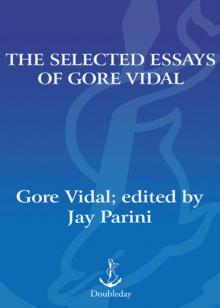 The Selected Essays of Gore Vidal
The Selected Essays of Gore Vidal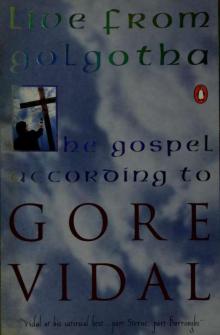 Live From Golgotha
Live From Golgotha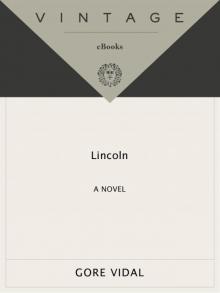 Lincoln
Lincoln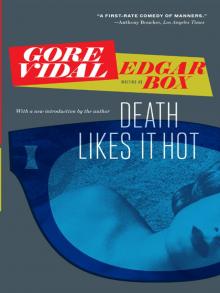 Death Likes It Hot
Death Likes It Hot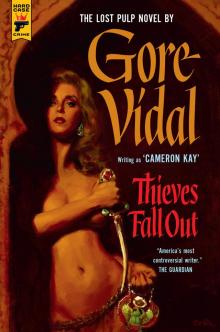 Thieves Fall Out (Hard Case Crime)
Thieves Fall Out (Hard Case Crime)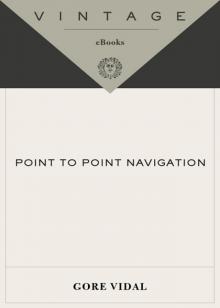 Point to Point Navigation
Point to Point Navigation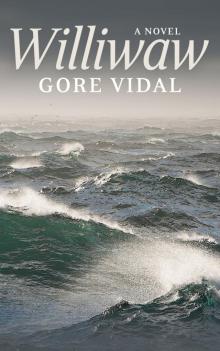 Williwaw
Williwaw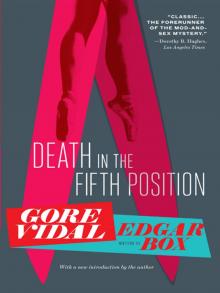 Death in the Fifth Position
Death in the Fifth Position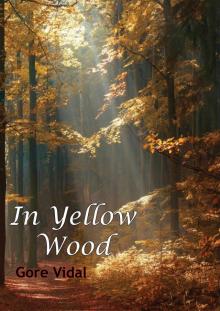 In a Yellow Wood
In a Yellow Wood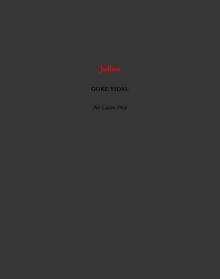 Julian
Julian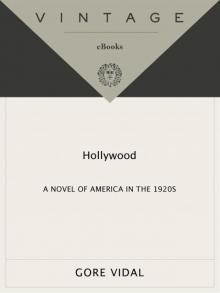 Hollywood
Hollywood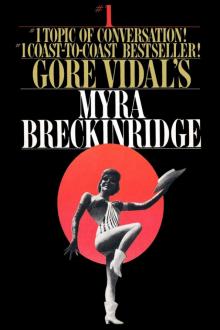 Myra Breckinridge
Myra Breckinridge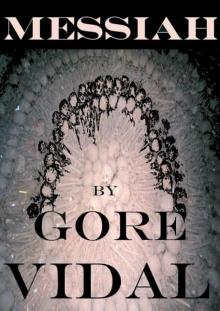 Messiah
Messiah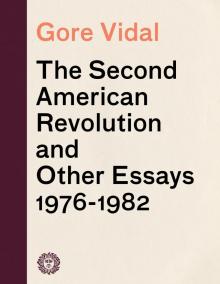 The Second American Revolution and Other Essays 1976--1982
The Second American Revolution and Other Essays 1976--1982 Homage to Daniel Shays
Homage to Daniel Shays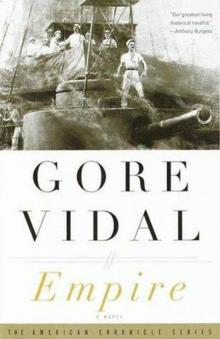 Empire
Empire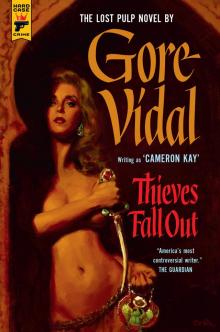 Thieves Fall Out
Thieves Fall Out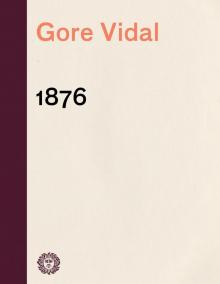 1876
1876 The City and the Pillar
The City and the Pillar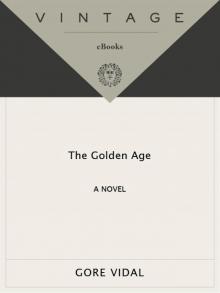 The Golden Age
The Golden Age At Home
At Home